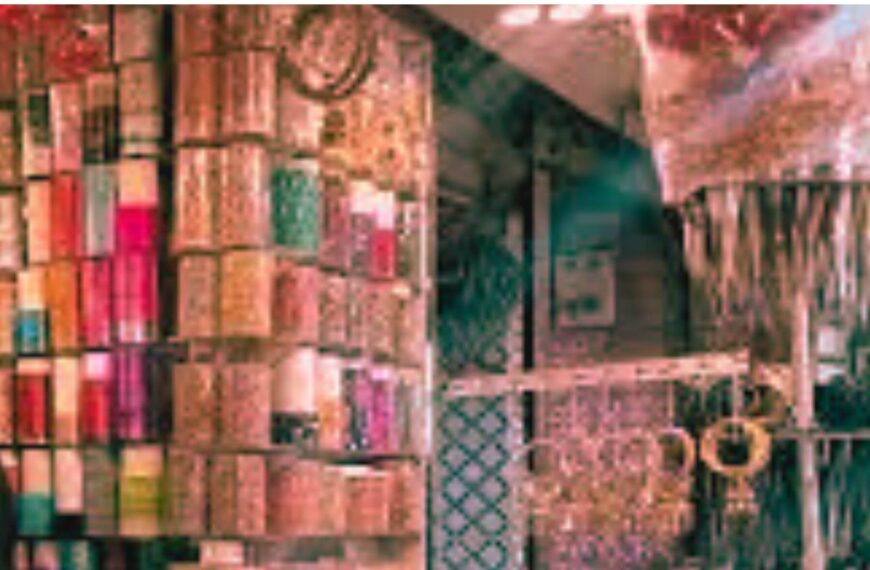 The walls around Toledo are an example of one of the most fortified complex systems of the Middle Ages in Europe. It is one of the oldest cities of the region. We saw ruins which date back to 3000 years. This city on hills has seen several different cultures sweep over it. Paramita takes us on a tour through history, exclusively for Different Truths.
The walls around Toledo are an example of one of the most fortified complex systems of the Middle Ages in Europe. It is one of the oldest cities of the region. We saw ruins which date back to 3000 years. This city on hills has seen several different cultures sweep over it. Paramita takes us on a tour through history, exclusively for Different Truths.
Toledo is a city in central Spain. It is 70 km away from Madrid. This May, I travelled to Toledo from Madrid. I booked a tour bus. We left at about 9 in the morning. Leaving behind the Spanish Parliament on the right and the Sabatini Gardens on the left, we went towards Toledo. Sabatini Gardens is a part of the Royal Palace but open to the public. Our tour bus took F30, a tunnelled road and then took the National Highway 42.
The walled city of Toledo came into view. The walls around Toledo are an example of one of the most fortified complex systems of the Middle Ages in Europe. It is one of the oldest cities of the region. We saw ruins which date back to 3000 years. This city on hills has seen several different cultures sweep over it. Toledo was ruled by Iberians and then the Romans took over. The Visigoths followed and then the Arabs came. There was an influx of Jews and at the end Alphonso a Christian king conquered Toledo in 1085 AD. Toledo has been the capital of Spain twice in History. The second time it was the capital, it had a population of about hundred thousand. At present, its population is about seventy thousand. In 1561, King Philip shifted the capital of Spain from Toledo to Madrid.
Toledo is a UNESCO world heritage site and designated so in 1986 for its rich culture and extensive monuments and historical buildings and the harmonising of Christians, Muslims and the Jews.
We went up the hills. Thankfully it is totally modernised so we travelled by escalators up to the hill. Then the thrill of being in the ancient city! We walked through its narrow lanes and came to a square. The square is locally called by the name of a fast food chain. The houses around the square had Spanish flags stretched all around. Red rectangular banners were hanging from quite a few houses. Then we walked down the widest road of Toledo. Ironically it was not wide at all. Our guide, a red-haired Spanish girl tried her best to give us a feel of Toledo in her broken English.
The wide road had jewellery shops and souvenir shops on both sides. We then came to a juncture of five lanes. Although they still call it a juncture of four lanes. The shops selling religious artifacts of both Christian and Jewish faith were very jazzy and dazzled our eyes. There was a cathedral which had a clock with one hand. Nobody had fixed the other hand as it served the purpose of showing the time of the mass.
Our group then passed a few more lanes and came to a square. There was this very colourful tiny train on wheels going around with tourists. It was the Toledo Trainvision. The pink Toledo flag was fluttering high along with other flags on top of the City Hall. The Santa Maria Cathedral was standing there with all its glory. It is of Gothic style and made in the 13th century. There are three doors – the central door of Forgiveness, which was the door for Kings and Bishops; the Hell door on the left and the Final Judgement door on the right. Like a few other cathedrals in Europe, this cathedral is not symmetrical. The bell tower on the extreme left is very tall with no complementary tower on the right. Initially, there were thirteen bells in the bell tower. The largest which was seventeen tonnes broke. There were some funny stories circulating about this bell like the authorities said the large bell doesn’t ring because the Madrid people had complained about its loud noise and some said it isn’t used because the window panes in the surrounding houses broke due to the loud noise. Basically, the authorities wanted to deny the breaking of the bell. The square is the Plaza de Zocodover. In olden times it was an animal market.
We walked down the very narrow lanes of Toledo. Shops displayed different kinds of swords. Toledo was 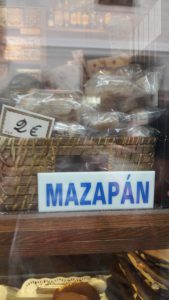 famous for its swords in olden days. It was a mark of distinction to own a Toledo sword. Suddenly I got back my childhood when I saw marzipans or marcepa’ns being sold in bakery shops. These are sweets of almond paste and sugar. Toledo is famous for such sweets. According to Toledo history, marzipans were invented by nuns of the Convent of San Clemente. After a battle in 1212, there was a terrible famine and a scarcity of wheat to make bread so the nuns made marzipans with almond and sugar which had ample supply to provide nourishment to the poor. Some shops enacted the making of marzipans by nun dolls. The enactment melted my heart.
famous for its swords in olden days. It was a mark of distinction to own a Toledo sword. Suddenly I got back my childhood when I saw marzipans or marcepa’ns being sold in bakery shops. These are sweets of almond paste and sugar. Toledo is famous for such sweets. According to Toledo history, marzipans were invented by nuns of the Convent of San Clemente. After a battle in 1212, there was a terrible famine and a scarcity of wheat to make bread so the nuns made marzipans with almond and sugar which had ample supply to provide nourishment to the poor. Some shops enacted the making of marzipans by nun dolls. The enactment melted my heart.
The colourful laced Spanish Flamenco dance fans in the shop windows were a feast for our eyes. A shop with models of old guns made my husband quite interested. Knives and scissors were also on display.
Toledo has archaeological sites where the different phases and cultures can be understood. A good example is the church of Sans Salvador. It is on the site of a 9th-century mosque. Within its walls, there are remains of Roman and Visigoth constructions. We saw a pillar dating from the early Christian or Visigoth period on which are depicted the scenes of the life of Christ.
At the bend came the Jewish quarters. The two synagogues which remain till date are Synagogue of El Transition and Synagogue of Santa Maria la Blanca. The first Jewish settlers were exiles from the tribes of Judah and Benjamin. Now only a small population of Jews remain. While walking down the narrow lanes of the Jewish quarters we saw shops selling Hanukkahs and Star of David and other religious artifacts of the Jewish faith. In 1368-69 when King Pedro entered Toledo, numerous Jews were killed. Gradually their population dwindled. The Synagogues are well maintained. We visited only one Synagogue, the Santa Maria La Blanca. The stain glass windows, the decorative dome, and the ornate pillars overwhelmed us.
We then walked back to the gates of the fort. On the way back, we ate tasty chicken and cheese Empanadillas.
I felt so good to know about the ancient walled city, which has been swept by so many different cultures and religions.
©Paramita Mukherjee Mullick
Photos by the author
#Travel #TravelAroundTheWorld #Toledo #Traveling #Travelogue #DifferentTruths

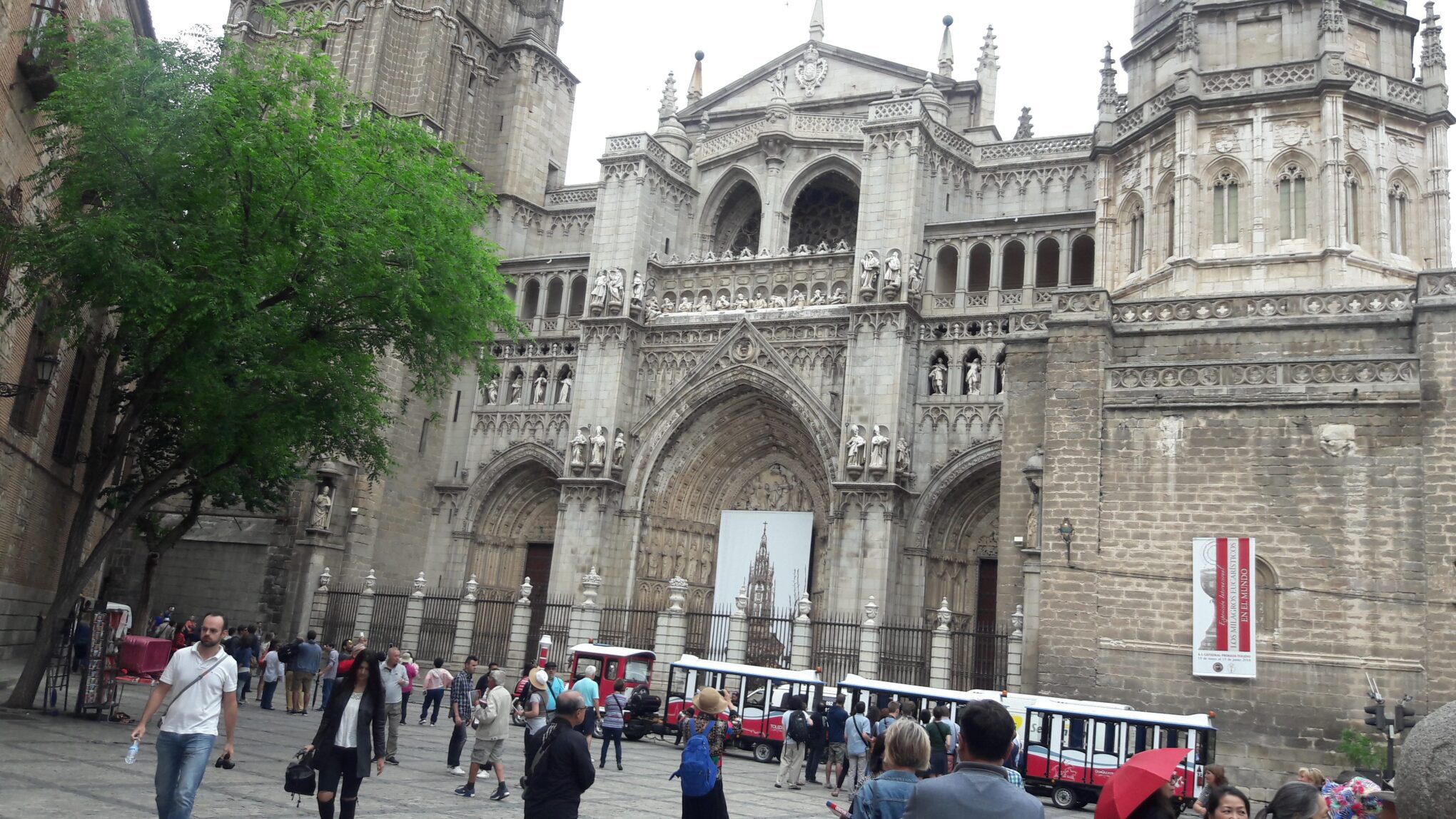
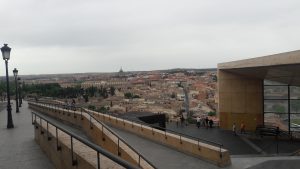
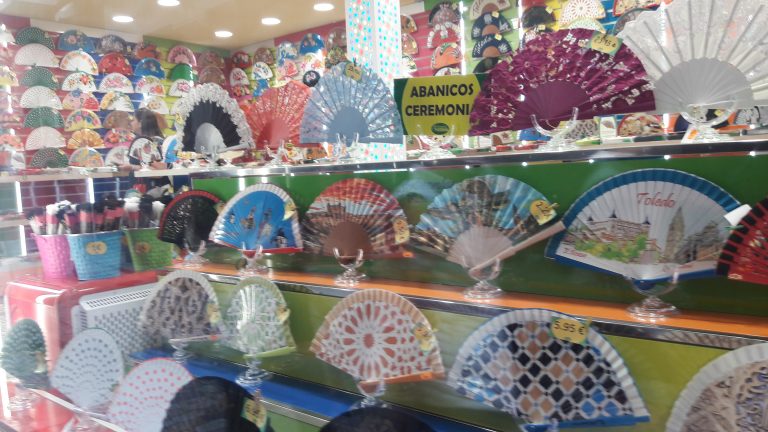
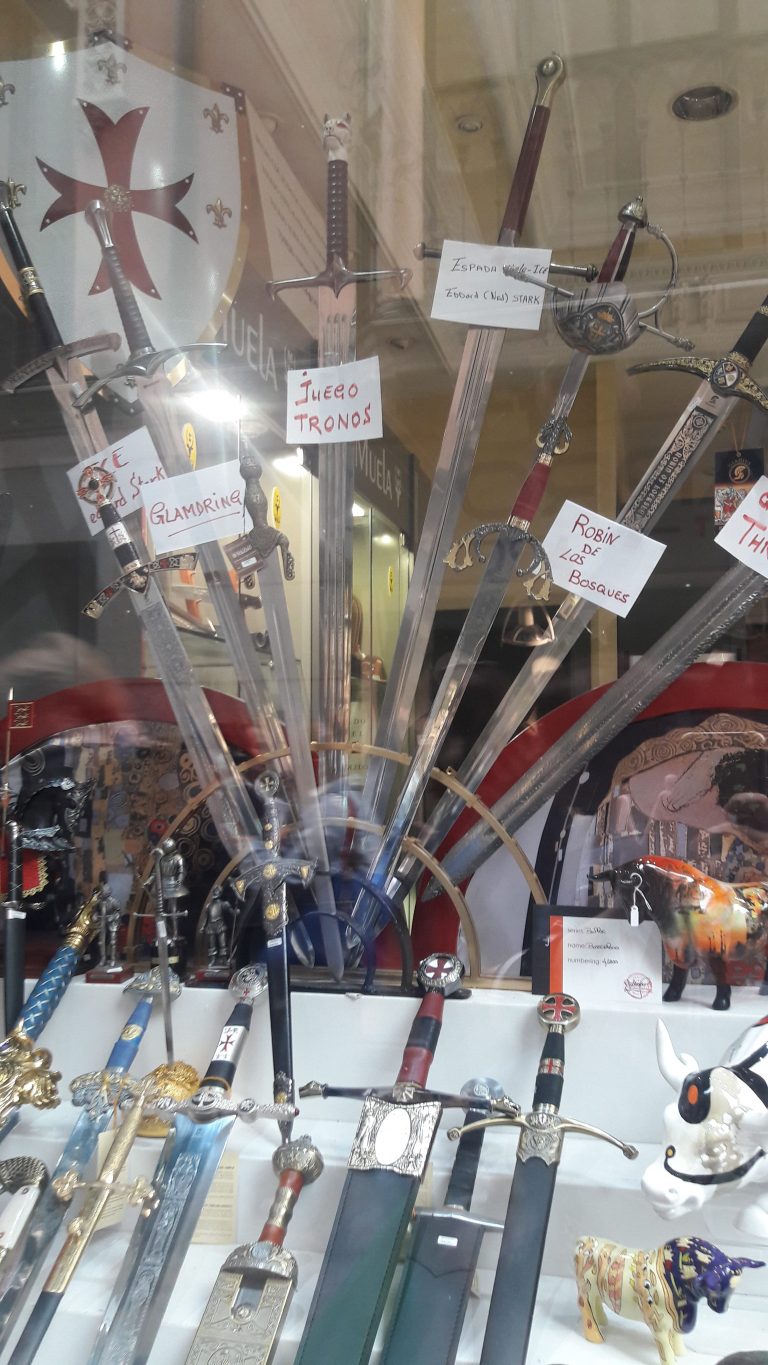
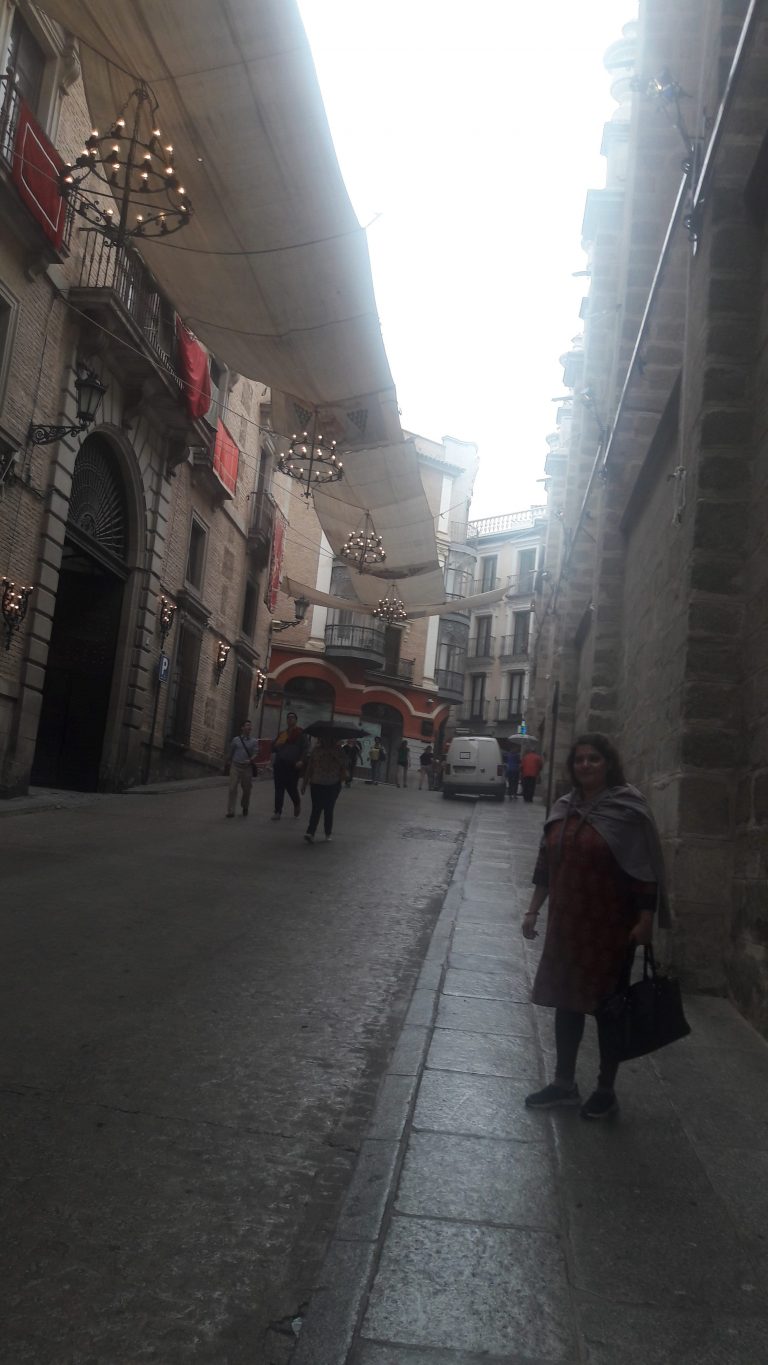
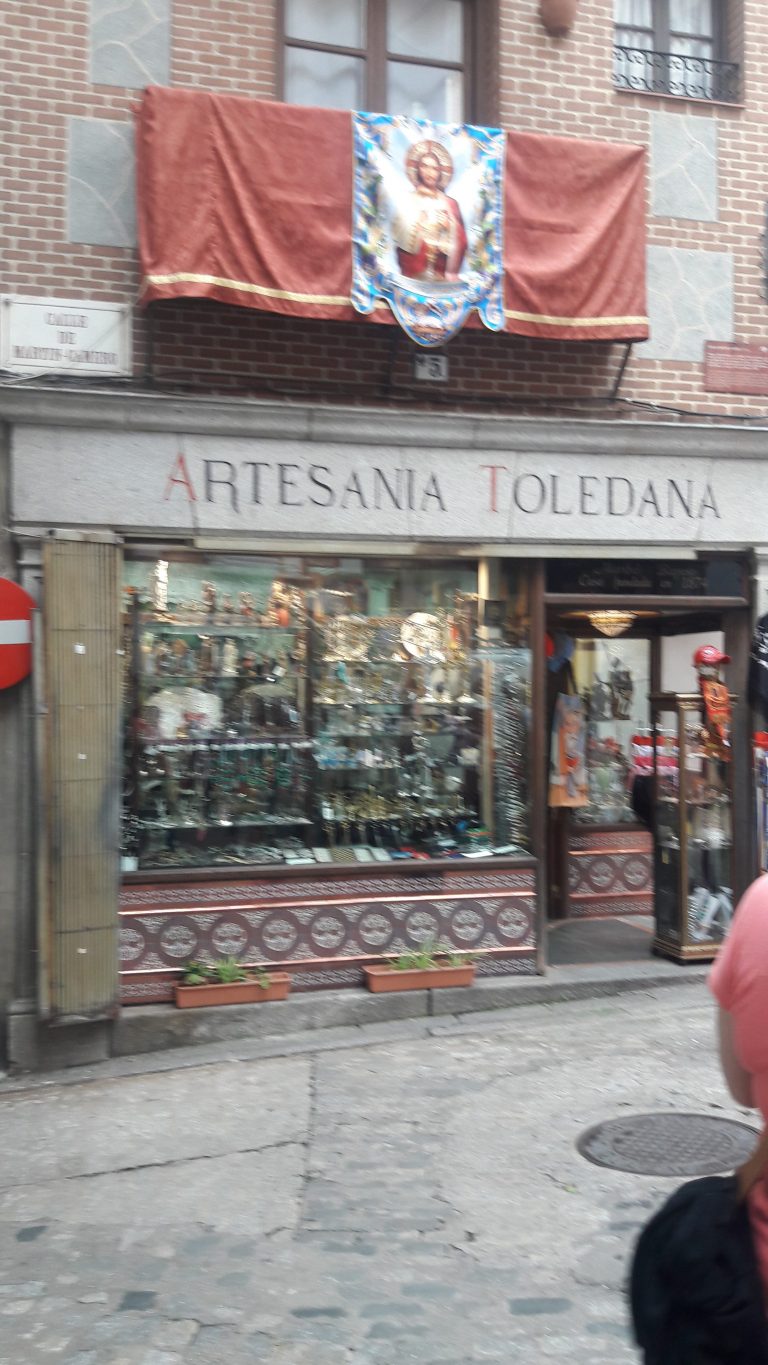
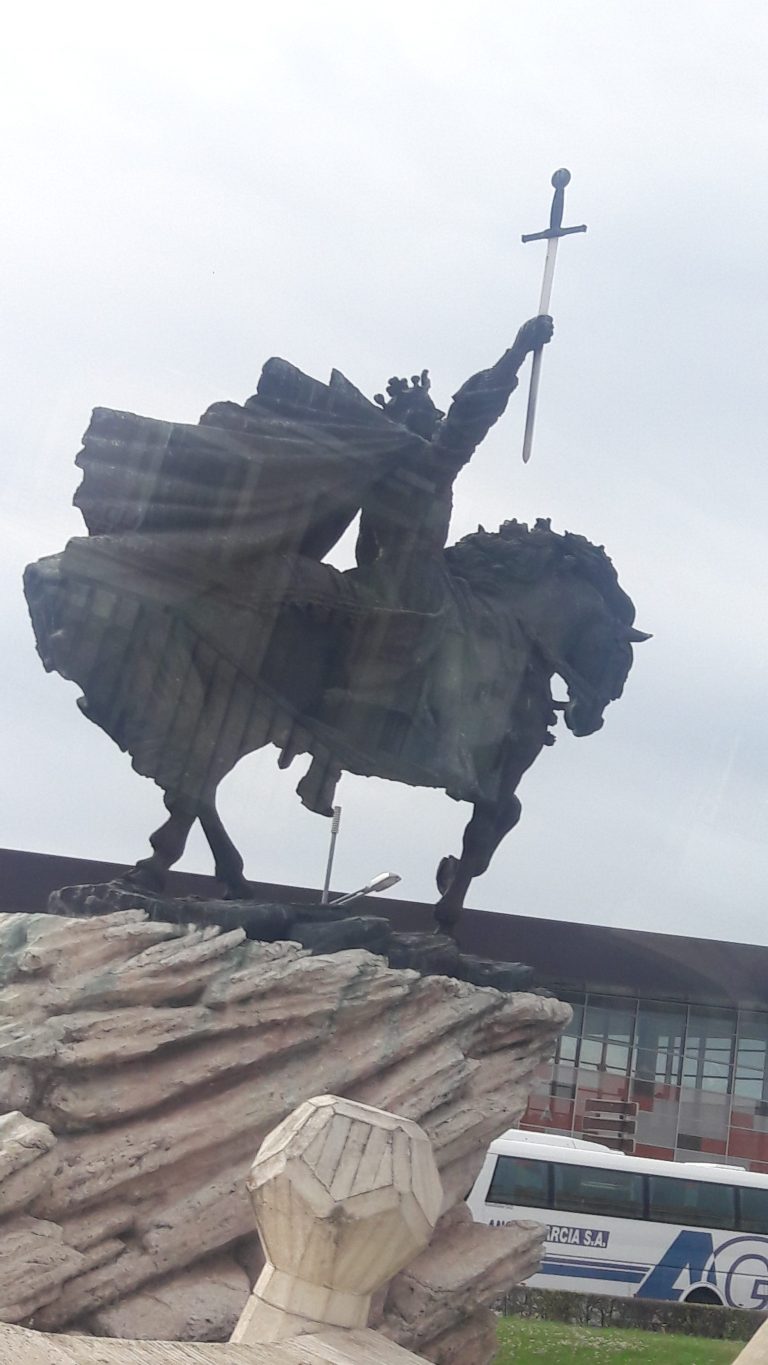




 By
By

